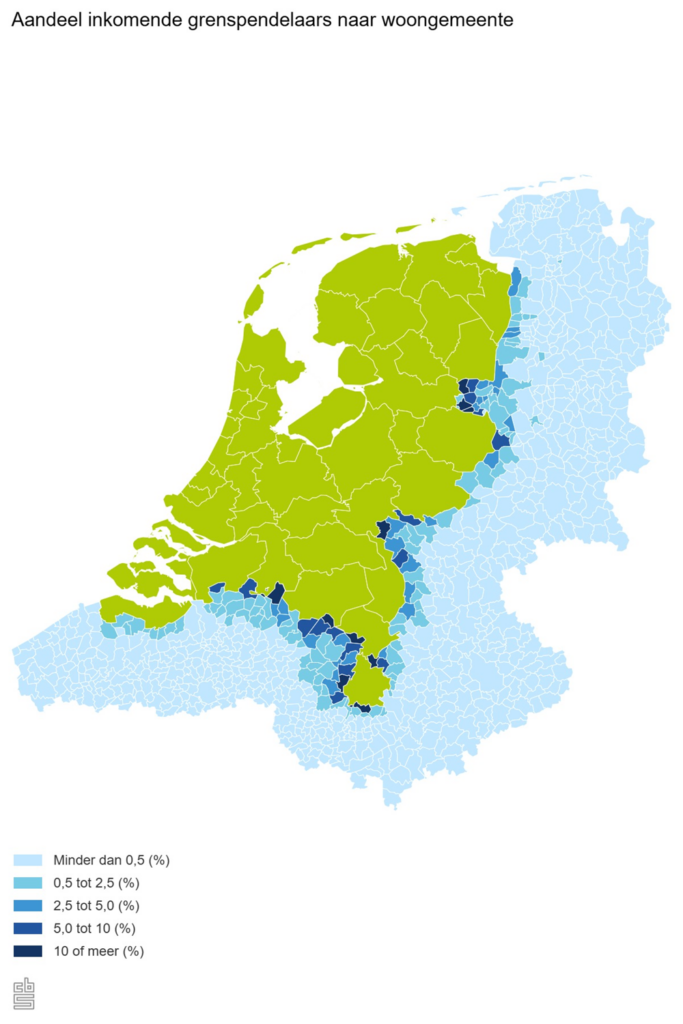It is completely normal for people in the border region to do some shopping or refuel across the border. Many people also commute from Belgium or Germany to the Netherlands for work.
The phenomenon of cross-border employment, where employees cross the borders between the Netherlands, Germany and Belgium every day for work, is an intriguing aspect of the European labor market. According to recent data from the Central Bureau of Statistics (CBS) and the statistical offices of North Rhine-Westphalia, Lower Saxony and Belgium, more than 86 thousand people make the daily journey from their home in Germany or Belgium to their work in the Netherlands. These figures shed light on the complex interaction between neighboring countries and its influence on regional labor markets.
From this Info shows that almost 44 thousand employees from Germany and another 42 thousand from Belgium come to the Netherlands to work. It is notable that these numbers have remained virtually constant since 2017, indicating a stable trend in cross-border employment. In contrast, the number of employees who work from the Netherlands in neighboring countries is considerably lower, with almost 7 thousand in North Rhine-Westphalia, 1 thousand in Lower Saxony and 11 thousand in Flanders. This unequal distribution underlines the attractiveness of the Dutch labor market for employees from neighboring countries.
Regionally, North, South Limburg and Zeeuws-Vlaanderen stand out as Dutch regions with a significant share of employees living in Germany or Belgium. In North Limburg, more than 5 percent of employees came from Germany in 2021, a percentage that is significantly higher than the national average of 0,5 percent. The proportions in German border regions are lower, for example in the Kreis Städteregion Aachen, where the share of Dutch employees is 1 percent.

CBS investigated for the first time where cross-border commuters who work in the Netherlands live in Belgium and Germany. They often come from small municipalities just across the border. The highest concentrations of commuters can be found along the borders with North Brabant and Limburg, Twente and Gelderland.
The data also provides insight into the trade relationship and economic interconnection between the Netherlands and Belgium, with a focus on innovation, digitalization and sustainability, as highlighted in the latest edition of the CBS Internationalization Monitor. These aspects are crucial for understanding the drivers of cross-border labor and its impact on the economies of the countries involved.
The trend of cross-border employment is driven not only by economic factors, but also by cultural affinities and historical ties between regions. The ability to work across borders strengthens integration within the European Union and promotes a labor market increasingly characterized by mobility and flexibility. However, this dynamic also brings with it regulatory, social security and tax challenges that need to be addressed to further facilitate cross-border employment.




